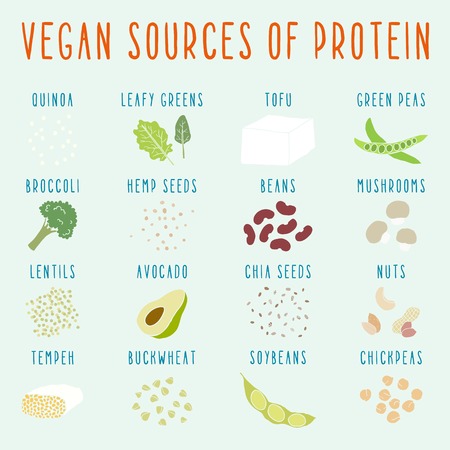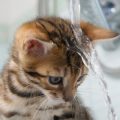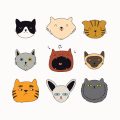1. Understanding Overfeeding in Small Pets
When it comes to caring for small pets such as hamsters, guinea pigs, rabbits, and birds, understanding their unique dietary needs is essential. Overfeeding is more than just giving a pet too much food—it means providing an amount or type of food that exceeds what their bodies actually require for healthy living. Unlike larger pets like dogs or cats, small animals have faster metabolisms but much smaller stomachs and specific nutritional requirements. Because of their petite size, even a slight excess in calories can quickly add up, putting them at risk for obesity and related health issues. Many pet owners might think they’re showing love by offering extra treats or filling up the food bowl, but this well-intentioned behavior can lead to serious consequences. It’s important to recognize that each species—and even each individual pet—has different needs when it comes to diet, and what works for one animal may not be suitable for another. By understanding what overfeeding truly means for small pets, we can take the first step toward preventing obesity and promoting long-term health.
2. Consequences of Obesity in Small Pets
Obesity in small pets, such as rabbits, guinea pigs, hamsters, and ferrets, can lead to serious health complications that may significantly reduce their quality of life and lifespan. Overweight pets are at higher risk for a variety of medical issues that can be challenging and costly to manage.
Common Health Risks Associated with Obesity
| Health Risk | Description | Impact on Pet’s Life |
|---|---|---|
| Shortened Lifespan | Obese pets often have a reduced life expectancy due to added stress on their organs and systems. | May live months or years less than healthy-weight peers. |
| Joint Pain & Arthritis | Excess weight puts strain on joints and ligaments, leading to pain and decreased mobility. | Difficulty moving, playing, or grooming; increased risk of injuries. |
| Diabetes | Overfeeding increases the risk of developing diabetes, especially in certain species like pet rats. | Requires ongoing medical management; can cause further complications if untreated. |
| Heart Issues | The cardiovascular system works harder to support extra weight, increasing the risk of heart disease and hypertension. | Lethargy, exercise intolerance, and potential for sudden cardiac events. |
The Hidden Costs of Overfeeding
While it might seem kind to indulge your pet with extra treats or larger portions, the long-term consequences can be devastating. Many owners underestimate how quickly calories add up for small pets. Even slight overfeeding can trigger these health problems over time.
Cultural Considerations in Pet Care
In American households, it’s common to show love through food, but for small pets, this well-intentioned habit can backfire. Instead of extra snacks, prioritize healthy interactions like playtime or enrichment activities. Understanding the risks associated with obesity helps ensure your furry companion enjoys a longer, healthier life by your side.

3. Recognizing the Signs of Overfeeding
Overfeeding can easily sneak up on pet owners, especially when it comes to small animals like hamsters, guinea pigs, rabbits, or ferrets. Knowing the warning signs is key to keeping your pet healthy and happy. One of the most obvious indicators is weight gain. If your small pet looks rounder than usual, has trouble grooming itself, or you notice fat deposits—especially around the abdomen or neck—these are red flags for obesity. Along with physical changes, overfed pets often show decreased activity levels. They may spend more time resting or hiding, and less time exploring their environment or playing with toys. This lack of movement can lead to muscle weakness and even joint problems over time.
Behavioral changes are another important clue. Pay attention if your pet seems less interested in food at regular mealtimes but still snacks constantly throughout the day. Some pets may become picky eaters, searching out treats and ignoring their balanced diet. Others might act lethargic or less social than usual, which can be a sign they’re not feeling their best due to digestive discomfort or other issues linked to overeating.
If you notice any of these signs—weight gain, reduced activity, or shifts in behavior and appetite—it’s a good idea to consult your veterinarian. Early intervention can help prevent more serious health problems down the road and ensure your small pet maintains a good quality of life.
4. Best Practices for Feeding Small Pets
Ensuring that your small pet maintains a healthy weight starts with understanding the best practices for feeding. Overfeeding is a common issue in the United States, often due to lack of clear guidance on portion sizes and suitable foods for each species. To help you make informed decisions, here’s how to set up a balanced feeding routine based on recommendations from trusted US veterinary resources.
Portion Sizes: How Much is Enough?
Every small pet has unique dietary requirements. Overestimating their needs can quickly lead to obesity and health complications. Use the following general guidelines as a starting point, but always check with your veterinarian for species-specific advice:
| Pet Type | Daily Portion Size | Food Recommendations |
|---|---|---|
| Guinea Pig | 1/8 cup pellets + unlimited hay + 1 cup fresh veggies | No seeds or nuts; vitamin C-rich veggies |
| Rabbit | 1/4 cup pellets per 5 lbs body weight + unlimited hay + 1-2 cups leafy greens | Avoid iceberg lettuce and high-sugar fruits |
| Hamster | 1 tablespoon pellets/seeds mix + occasional veggies/fruits | No sugary or salty treats |
| Gerbil/Mouse | 1 teaspoon pellets/seeds mix + small veggie pieces | Avoid sticky or processed foods |
Feeding Schedules: Establishing Healthy Habits
Creating a consistent feeding schedule helps regulate your pet’s metabolism and prevents overeating. Most small pets do well with one or two measured feedings per day, preferably at the same times. Avoid leaving large amounts of food out all day (“free feeding”), especially with calorie-dense pellets or treats, as this can encourage grazing and weight gain.
Selecting Species-Appropriate Foods
The right diet is essential for your pet’s overall health. Choose high-quality commercial foods formulated for your specific pet species—look for products recommended by veterinarians or certified by organizations like the Association of American Feed Control Officials (AAFCO). Supplement with fresh, safe vegetables and, when appropriate, limited fruits. Always provide fresh water daily.
Consult Your Veterinarian Regularly
Your vet is your best partner in keeping your pet healthy. Schedule regular wellness checks to monitor weight and adjust dietary plans as needed. If you notice sudden changes in appetite, energy levels, or stool quality, reach out promptly for professional advice.
5. Encouraging Healthy Habits and Exercise
Maintaining a healthy weight in small pets isn’t just about portion control—it’s also about creating an enriching environment that encourages movement and natural behaviors. Just like people, pets need opportunities for both mental stimulation and physical activity to stay happy and healthy. Here are some practical tips to help your little companions avoid obesity while enjoying their daily routines:
Set Up an Engaging Living Space
Design your pet’s habitat with plenty of room to explore, climb, burrow, or play. For small mammals like hamsters, mice, or guinea pigs, tunnels, wheels, hideouts, and chew toys can provide hours of entertainment and exercise. Birds benefit from perches at different heights, swings, and ladders that encourage flight and hopping. Regularly rotating toys and rearranging cage accessories keeps things interesting and motivates natural curiosity.
Schedule Playtime Outside the Cage
If it’s safe for your pet’s species, allow supervised time outside the enclosure in a secure area. Rabbits enjoy hopping around a bunny-proofed room, while ferrets love exploring new spaces under watchful eyes. Even small rodents can benefit from “playpens” filled with safe objects to investigate.
Incorporate Treats into Activities
Instead of offering treats by hand, hide healthy snacks or pellets inside puzzle feeders or among shredded paper. This not only slows down eating but also turns mealtime into an engaging search-and-find activity that taps into their instincts.
Make Exercise Part of the Daily Routine
Aim for regular periods of interaction and activity each day. For example, set aside time every evening for gentle handling or interactive games using safe toys. Always tailor activities to your pet’s age, species, and abilities—some may prefer short bursts of play while others thrive on longer sessions.
Monitor Progress and Adjust as Needed
Watch how your pet responds to new activities. If they seem bored or lethargic, try switching up the routine. Conversely, if they appear stressed or tired, scale back and opt for quieter forms of enrichment. Remember: consistency is key to building lasting habits that support lifelong health.
By fostering a stimulating environment and encouraging regular exercise, you help prevent obesity-related problems and give your small pets the best chance at a long, vibrant life.
6. When to Consult a Veterinarian
If you’re worried about your small pet’s weight or eating habits, it’s important to know when to seek professional help. While occasional changes in appetite can be normal, persistent issues may signal an underlying health problem. If your pet is gaining weight rapidly, seems lethargic, or has difficulty moving, these could be signs of obesity or related complications. Similarly, if your pet suddenly loses interest in food or experiences unexplained weight loss, don’t wait to reach out to a veterinarian.
Recognizing Warning Signs
Look for warning signs such as difficulty breathing, reduced activity levels, visible discomfort, or abnormal swelling around the abdomen. Changes in behavior—like hiding more than usual or acting irritable—can also indicate that something isn’t right. Early intervention can prevent serious health issues from developing and ensure your pet receives the care they need.
How a Veterinarian Can Help
A veterinarian can assess your pet’s overall health, determine if their weight is within a healthy range, and rule out medical conditions that may contribute to obesity. They can also provide guidance on proper nutrition and portion sizes tailored to your specific pet species and breed. If needed, your vet may recommend diagnostic tests or a specialized weight management plan to help your pet achieve and maintain a healthy lifestyle.
Don’t Wait—Trust Your Instincts
As a pet parent, you know your furry (or feathered) friend best. If you notice anything unusual or feel unsure about their diet or weight, it’s always better to consult with your veterinarian sooner rather than later. Proactive care is key to preventing obesity-related complications and keeping your small pets happy and healthy for years to come.


